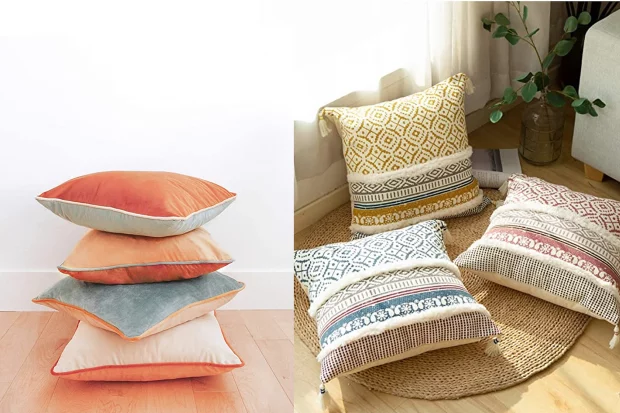If you are thinking about throwing out your pillow cases, keep reading. We’ll be taking a look at the top four reasons why it may be time to do so. Once you’ve followed through, replacing them will be the next step.
It may seem like a pain to purchase bed sheets, pillows, and everything else in between for a year or two. It’s an expense that we might just have to pay. Your best option would be to take the best care of them to ensure an extensive life span.
If you are dealing with skin issues, you’ll be caring for these pillow cases a lot more often than normal. It can even cut the lifespan short as well. Sometimes too much of a good thing can be bad.
Now, let’s talk more about the reasons to throw out your pillow cases when the time comes.

If the material isn’t as soft anymore
When you purchase your pillow cases, they’ll be nice and soft. Over time, the fibers will break down to the point where the material can be a bit rough. That can be problematic for those with sensitive skin.
You may wake up with itchiness, irritation, and who knows what else. So it’s important to take the best care of them possible. Even if you wash them more often than normal, you want to check the softness once in a while.
When you do, you’ll want to notice if there’s any rough spots. When it has reached the end of its lifespan, that’s when you need to consider throwing them out. That is you intend to wake up with irritable skin all the time.
If you wash them a little more often, this can cause the softness to disappear a little quicker than normal. This can be an issue for someone that is dealing with sensitive skin issues. They often wash their pillowcases to ensure that all the allergens are removed as soon as possible.
A rough pillowcase will make sleep a bit more uncomfortable. Even if you don’t notice it in the slightest.
You’re dealing with allergies
Over time, you’ll have allergens that will get trapped in your pillowcase. It will be easier to wash them out. But when you’ve used them long enough, it will be easier for them to stay in place.
So, you once again deal with the skin irritation and anything else in between. Yes, you’ll want to wash your pillowcases once per week. Even if you don’t have allergies, that’s always a rule of thumb.
The reason for this is you might be building up all kinds of allergens and microbes that can cause infections. Plus, if you are sharing a bed with someone, they might be dealing with issues as a result. So do them a favor and wash them every week so you can reduce the amount of allergen build up.
You notice any thin spots
If there are any thin spots anywhere on the pillowcase, you’ll want to get them thrown out as soon as possible. Because it can be a place where holes can develop at any point. Too much wear and it will start tearing.
Thin spots can be here and there. Or the material all over can be thin and about ready to rip. Regardless, the sooner you get them thrown out in favor of soft, fresh pillow cases, the better.
If the stains are hard to get out
Your pillow cases can get stained due to dirt, makeup, and even oil build up. They can be easy to remove if they still have a lot of life left in it. However, if the stains are too difficult to remove, that means it may be time to replace them.
You could dye them if they are of a certain color. Yet, it can only take them so far before they blemish again. If they are white, then you can expect discoloration to happen.
Either way, it may be a good idea to consider changing out your old pillowcases for the new. The sooner you start noticing the stains are hard to remove, the earlier you can start thinking about replacing them.
Final Thoughts
If you are considering the idea of throwing out your pillow cases, these four reasons listed above should be a good starting point. It’s true that nothing ever lasts forever. So make sure you use them for as long as possible before you have them switched out.
Keep in mind that pillow cases will need to be switched out once every year or two. This can depend on how often you take care of them. The regular wear and tear will occur and the materials can play a role in how long it will take before the need to replace them happens.



